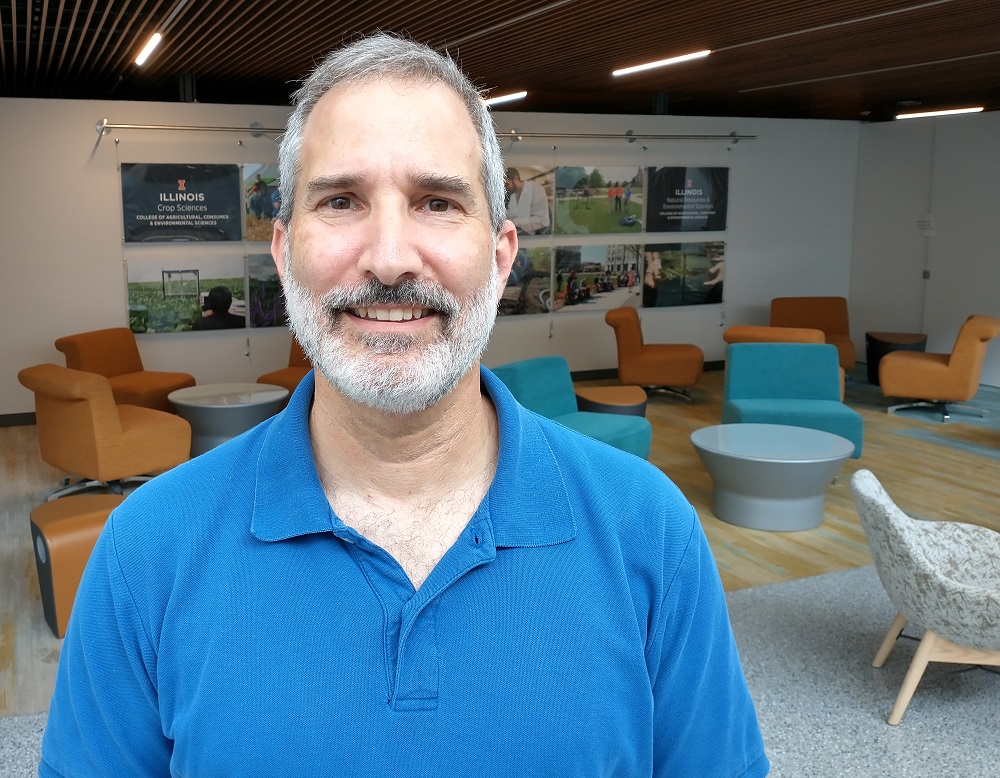Helping students embrace data will enhance ag-related job options

A recent news item reported a “digital divide” between urban and rural high school students in Illinois due to few computer science course offerings in schools outside Chicagoland. Given the state’s workforce development needs in this area (around 14,000 unfilled positions requiring computer skills at the time of the study), it is concerning that the educational gap not only exists, but is growing.
As both a crop sciences department head and career-long supporter of students, I’d like to use this space to consider how to connect our state’s students with data-driven career opportunities.
But if you’re in a hurry – like so many of us are today – scroll down to the “demand for employees” section for essential information about College of Agricultural, Consumer and Environmental Sciences (ACES) options. And check out this "changing the world" information.
So, data is all around us, permeating every aspect of our lives, including our food systems. From handheld devices to supercomputers, small chat rooms to social media platforms, sensors in agricultural equipment to satellite-based remote sensing, breeding programs to autonomous robots, and local markets to regional supply chains, data is pouring out of our food production, aggregation, and distribution systems.
Drowning in data
So much data, in fact, that we call these collections “data lakes.” Ironically, having such enormous amounts of data has created a new challenge: we don’t always know what to do with it (ever try drinking from a firehose?). One of the lessons I’ve learned as an agricultural scientist who works with large data sets is that context is everything. If you don’t understand the practical side of how and why the data you’re working with were generated, you won’t be able to generate useful new knowledge with those data.
Digital agriculture is a rapidly emerging field of science and industry that seeks to explore these data lakes and make them useful to participants in our food systems.
Precision agriculture, which uses knowledge of in-field variability in the growing environment to drive management recommendations to help producers use inputs in a more cost-effective way, is a subset of digital agriculture, which links data across levels of biological and management scale (from gene to organism to field to region) to provide new insight into complex problems. For example, achieving the increases in crop productivity required to maintain and improve food security will rely on data-intensive innovations in plant improvement that pair plant breeders with artificial intelligence-driven image processing systems that both speed up the process and enable breeders to see previously hidden traits.
The tremendous opportunity that digital agriculture presents for balancing agricultural productivity with sustainability has encouraged a growing ecosystem of companies seeking to innovate in this space.
Demand for employees
This has created high demand for employees who have computer science skills grounded in a working knowledge of agricultural systems.
The University of Illinois College of ACES and Grainger College of Engineering offer two interdisciplinary undergraduate majors that help students develop the skillsets that prepare them to participate in the digital agriculture industry
Students pursuing these degrees are eligible for scholarships to support their study, and they can participate in a Digital Agriculture club that helps them go beyond the classroom to build relationships with their peers and industry leaders.
So how do we help students overcome the digital divide in high school computer science training opportunities so that they may pursue the career opportunities open to CS+CPSC and CS+ANSC majors at the University of Illinois?
One way we’re addressing this is through our summer course in digital agriculture for high school students. This course helps provide an on-ramp to digital agriculture programs at U of I by training students in some of the computer science skills, grounded in an agricultural context, needed to enroll in these programs.
The program is clearly only a drop in the bucket.
We need to find ways to extend these opportunities to a much wider group of students, through online modules and through groups such as 4H and FFA that already have a presence in high schools. This won’t solve the entire disparity in access, but perhaps by showing some small initial success, we’ll begin to see a movement in our educational system to make these opportunities more available to students across our state, helping them build the toolkits needed to participate in this rapidly changing and diversifying set of career opportunities.
Learn more about Department of Crop Sciences Head Adam Davis.